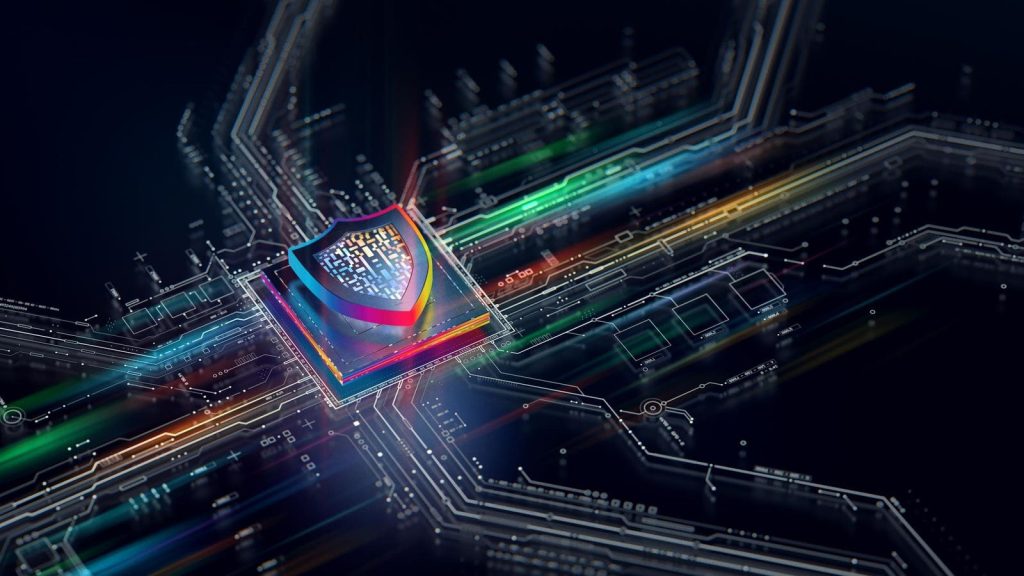Balasubramani Murugsan, Digit7. Specializing in natural language processing and AI-driven solutions for software development, data and IoT.
In today’s era, cybersecurity increasingly relies on artificial intelligence (AI) to keep up with evolving threats. As businesses integrate more technology into their processes, the risks of data breaches and cyberattacks also rise.
AI-enabled cybersecurity helps identify potential threats, supporting companies in proactively managing risks and meeting regulatory standards. This approach is gaining popularity because it enhances the ability to detect vulnerabilities and strengthen security protocols. Ultimately, adopting AI-driven cybersecurity can help improve transparency and enable more effective decision-making for businesses.
Introduction
AI has driven the use of machine learning algorithms to identify cyber threat patterns and their impacts. Analyzing these patterns facilitates real-time cybersecurity monitoring, helping to reduce threats and prevent unauthorized data access. AI also supports regulatory compliance in data management across business operations, aiding in sustainable practices. Regulatory bodies emphasize risk assessment to proactively identify and mitigate potential cyber threats, and AI-powered systems play a key role in strengthening these defenses.
When it comes to the challenges that boards deal with, cybersecurity was ranked second according to PwC’s 2023 Annual Corporate Directors Survey. This focus on cybersecurity aids in optimizing system resource management and reducing cyber threats in line with global data management standards.
Regulatory Measures For Cybersecurity Solutions
The European Union’s General Data Protection Regulation (GDPR) enforces technical and organizational measures to ensure security and reduce digital risks. These data protection guidelines help prevent fraud and cybercrime, which strengthens consumer trust and retention. GDPR mandates that security measures must be incorporated into systems from the design phase through to completion, maintaining privacy throughout. In case of a significant data breach, businesses must notify consumers and supervisory authorities within 72 hours, enhancing cybersecurity transparency regarding data processing.
In contrast, the California Consumer Privacy Act (CCPA) introduces additional regulations, focusing on risk-based approaches to business operations. AI-driven processes that handle sensitive data must be transparent to consumers, showing how they affect service outcomes. CCPA grants consumers the right to limit the use and disclosure of their sensitive information.
Additionally, it requires companies to implement a data broker registry, allowing consumers to delete their information from participating businesses. This registry supports transparency and strengthens cybersecurity practices. The EU’s regulatory model also serves as a framework for international AI regulation, balancing technological innovation with societal values.
What These Updates Mean For AI-Driven Cybersecurity
These regulatory updates to GDPR and CCPA have had positive impacts on cybersecurity solutions. Key influences include:
Data Protection
To comply with GDPR and CCPA, businesses must ensure the AI they adopt enhances transparency in processing large-scale data. These regulations improve the handling and collection of personal data, creating a fair and secure system by identifying cyber threats early on.
For example, Coca-Cola implemented AI-powered cybersecurity solutions to identify threat patterns and provide real-time support in system design. The company uses data protection measures to safeguard both personal and business data associated with its operations. Coca-Cola utilizes Microsoft Azure, a cloud-native event management solution, which helps detect and respond to cyber threats with real-time data insights.
Enhanced Risk Assessment
Transparent, explainable risk assessment solutions are essential for expanding AI-driven cybersecurity within companies. These improvements provide valuable insights into cybersecurity operations and their influence on security management decisions.
Developing Accountability
AI can enhance business operations by identifying potential risks, improving decision-making processes. With GDPR and CCPA, businesses are guided to justify their cybersecurity practices using AI insights, fostering accountability and transparency in management decisions. This regulatory framework supports designing systems with robust cybersecurity measures for clear business accountability.
Bias And Fairness
AI-driven cybersecurity promotes fairness and legality in business operations. Under GDPR and CCPA, it can help prevent discrimination, ensuring services are delivered equitably. For instance, Microsoft uses AI in cybersecurity with an intelligent learning mechanism to identify threats and provide real-time responses. This system provides fair solutions and transparent reporting to authorities on security management decisions. Microsoft’s AI-driven approach, which incorporates advanced threat intelligence, is also leveraged by Prudential in its health and life insurance systems, reducing false positives and enhancing incident response effectiveness.
Potential Challenges In Implementing AI-Driven Security
Although the implementation of AI-driven security solutions has several advantages, there are challenges to consider as well.
Ethical Concerns
AI can raise ethical issues, especially when it comes to transparency in decision-making. Companies must ensure compliance with data privacy and protection regulations to prevent biased actions or decisions, which could harm their reputation and operations.
High Implementation Costs
Integrating AI-driven technology requires significant investment in both hardware and software infrastructure. Additionally, companies need to budget for hiring skilled personnel to manage and maintain these systems, which can be particularly challenging for smaller businesses.
Dependence On Data Quality
AI systems heavily rely on high-quality data to function effectively. Inaccurate or poor-quality data can lead to incorrect decisions, increasing the risk of compliance issues and operational failures.
Employee Resistance
The introduction of AI technologies can cause concern among employees who fear job displacement. To mitigate resistance, businesses need to provide effective training and clear communication to ensure staff buy-in and address any concerns.
Conclusion
Integrating AI into cybersecurity can enable businesses to protect operations and managerial data while complying with regulations like GDPR and CCPA, supporting sustainable management. This regulatory compliance strengthens alignment across business units by navigating the regulatory landscape with innovative cybersecurity solutions. Effective risk management within business systems can also promote transparency and accountability, ensuring the safe use of AI in cybersecurity.
When approached strategically, this can address operational challenges such as data breaches, enhancing cybersecurity through proactive risk assessment while promoting quality assurance in AI-driven services.
Forbes Technology Council is an invitation-only community for world-class CIOs, CTOs and technology executives. Do I qualify?
Read the full article here










